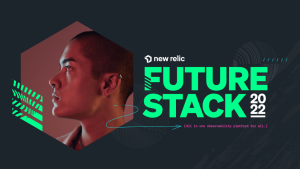Every company’s technology stack is different, and every company needs unique views of the data generated by their apps and systems. You can build and deploy custom apps on New Relic One that give you the insights and information your company needs to connect data from any source with your specific business requirements. To show you what’s possible—and to inspire you to create your own apps—we’re sharing some of the open source apps developers have built on our platform.
In this blog series, we highlight the most popular apps available. The best part: They’re all open source and ready to be deployed.
In this edition, we cover:
- Observability Maps
- Metric Aggregator
- Workload Geo Ops
Subscribe to applications with the New Relic One Catalog
Before we start accessing the applications via the CLI, let’s look at how to access these applications directly within New Relic One. To explore available applications, navigate to New Relic One and click on the New Relic One Catalog launcher.
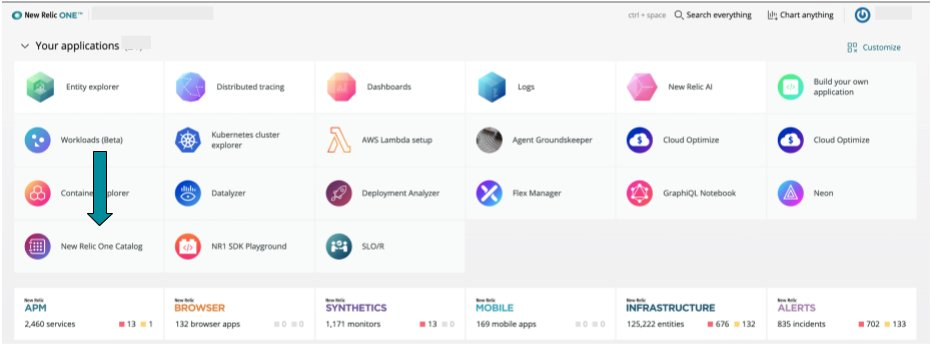
From there, you can access all our global applications. If you’re a Nerdpack Manager, you’ll be able to subscribe applications to accounts and subaccounts. Click Add the app to add the application to the account you wish to grant access. If your team changes, and you need to remove access, you can unsubscribe applications from accounts directly within New Relic One.
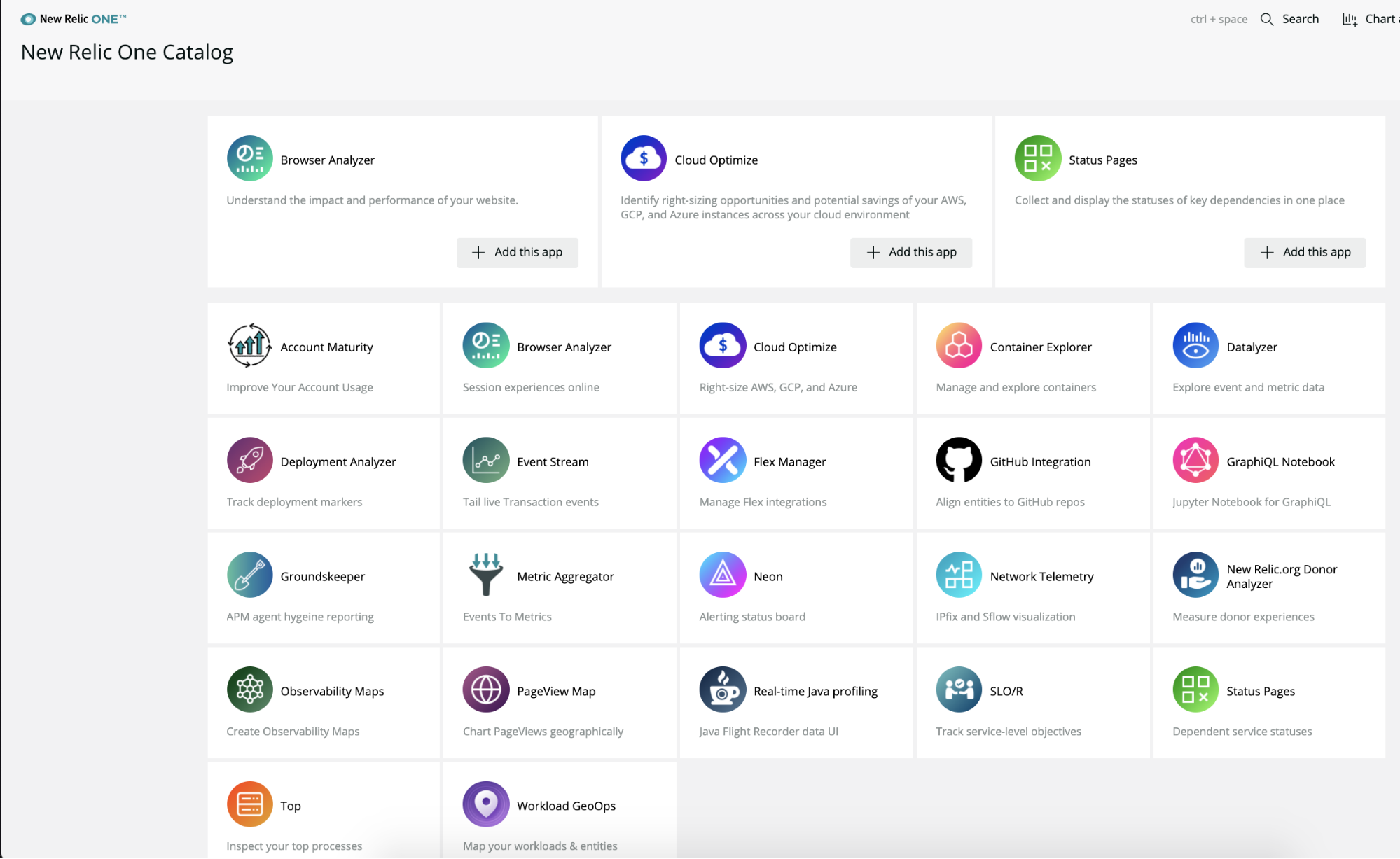
If you deploy an application from the catalog, you can use it with only its out-of-the-box capabilities. If you want to customize an app, you’ll need to deploy it through the CLI. We’ll explain that process below.
Observability Maps
Observability Maps allows you to create a view beyond a traditional service map. Using Observability Maps, you can connect disparate entities in your environment into ad hoc relationships, creating your own relationships based on data available in New Relic. See your entities and environment in a way that makes the most sense to your team and business.
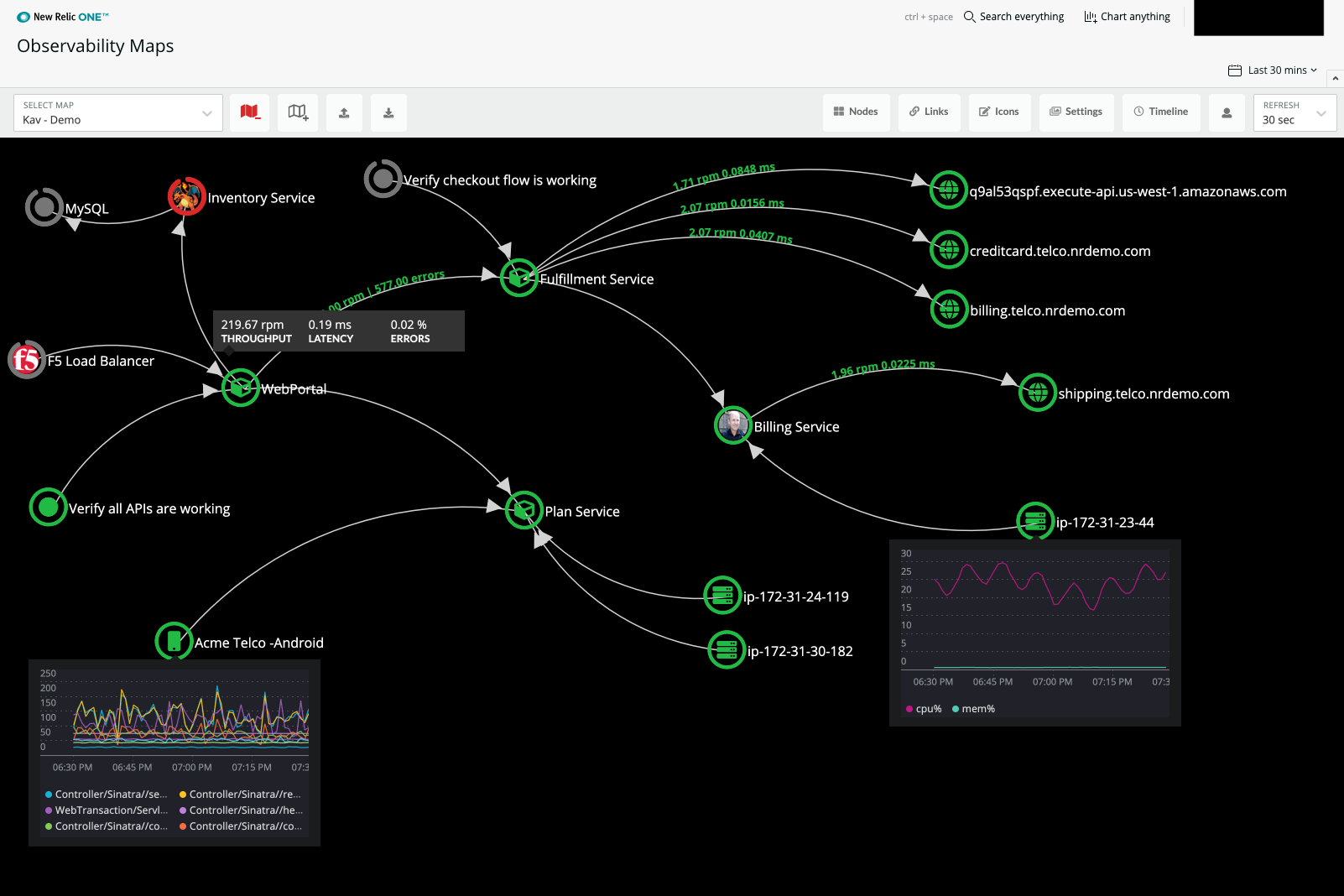
Fork or deploy the Observability Maps app from GitHub.
Specific requirements for this app
Requires data in NRDB from any or all of the New Relic products.
Metric Aggregator
The Metric Aggregator is a New Relic One application that helps you create events-to-metrics (E2M) rules, a real-time streaming service that converts event data into dimensional metrics at ingest. Converting events to metrics allows for more efficient data storage, which in turn allows for faster, more efficient data queries and chart-builds.
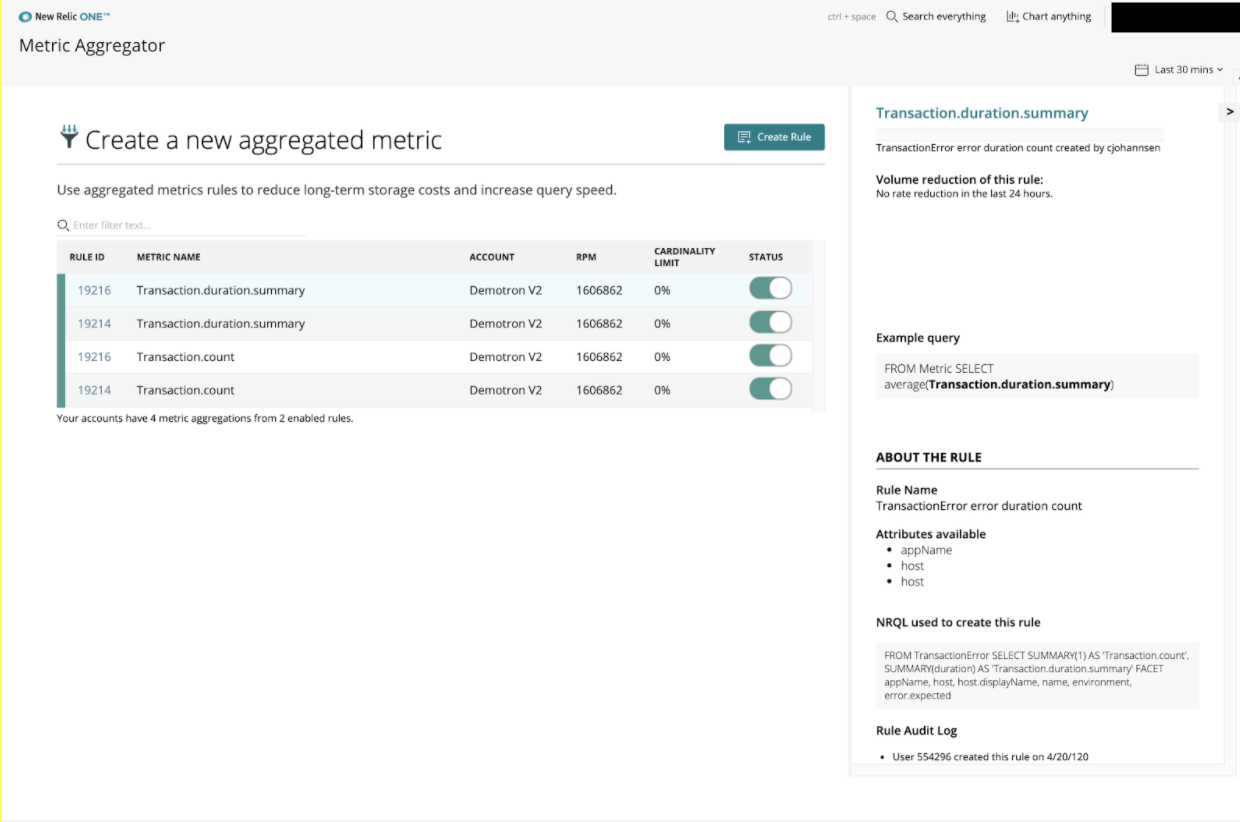
Fork or deploy the Metric Aggregator app from GitHub.
Specific requirements for this app
If you use New Relic, you already have New Relic Metrics. You can create E2M rules immediately.
Workload Geo Ops
Workload Geo Ops links your workloads (collections of entities) to physical locations so you can quickly identify and resolve incidents. It's a geographic exploration of workload data tied to geographic data, including location metadata. You can define maps and then collect or assign entities to points on those maps. With workloads, a collection of entities can be managed by rules and tags to support the dynamic, ephemeral nature of modern IT infrastructure.
Fork or deploy the Workload Geo Ops app from GitHub.
Specific requirements for this app
To get the most of this app, we recommend that you configure Workloads in New Relic One.
What are you waiting for? Deploy these apps now.
To deploy any of these apps you need:
- Access to New Relic One (Requires a paid New Relic account and use of a supported browser)
- The New Relic One CLI
- A personal New Relic API key
- Node v10 or higher
- A GitHub account
Once you have these requirements in place, deploying an application locally—in this example, Workload Geo Ops—is as easy as running a few commands:
nr1 nerdpack:clone -r https://github.com/newrelic/nr1-workload-geoops.git cd nr1-workload-geoops nr1 nerdpack:serve
Or you could download, configure, and deploy an account-specific instance of Workload Geo Ops to your New Relic account using the following commands:
nr1 nerdpack:clone -r https://github.com/newrelic/nr1-workload-geoops.git cd nr1-workload-geoops
nr1 nerdpack:publish nr1 nerdpack:deploy -c STABLE nr1 nerdpack:subscribe -c STABLE
Then go to the homepage of one.newrelic.com and select the app’s launcher.
Check out these other resources for using—and building—New Relic One applications
Here are resources to help you build your own New Relic One applications. If you can imagine it, you can build it:
- developer.newrelic.com: Build applications in minutes using our CLI and SDK. Review our library of React components for designing interfaces, charting data, and fetching data from our GraphQL API.
- New Relic Developer Toolkit: a suite of tools expressly built to ease the configuration, management, and usage of New Relic through automation.
- NerdGraph GraphQL Explorer: Explore your data using our GraphQL API.
- New Relic documentation: Learn more about:
- The Nerdpack file structure, including how to link your application with an entity.
- Application/data access and permissions and security.
- NR1 Workshop: a step-by-step, self-paced, open source training experience designed to introduce you to the New Relic One CLI and SDK.
- New Relic Explorers Hub: Community posts and questions about using and building New Relic One applications.
Contribute to these open source projects
We welcome open source application contributions. If you’d like to contribute, please review our Contributors Guide. Keep in mind that when you submit your pull request, you’ll need to sign our Contributor License Agreement (CLA). If you'd like to execute our corporate CLA, or if you have any questions, drop us an email at opensource@newrelic.com.
Be sure to check in regularly! We’ll preview more of our very best apps in future editions of this series.
이 블로그에 표현된 견해는 저자의 견해이며 반드시 New Relic의 견해를 반영하는 것은 아닙니다. 저자가 제공하는 모든 솔루션은 환경에 따라 다르며 New Relic에서 제공하는 상용 솔루션이나 지원의 일부가 아닙니다. 이 블로그 게시물과 관련된 질문 및 지원이 필요한 경우 Explorers Hub(discuss.newrelic.com)에서만 참여하십시오. 이 블로그에는 타사 사이트의 콘텐츠에 대한 링크가 포함될 수 있습니다. 이러한 링크를 제공함으로써 New Relic은 해당 사이트에서 사용할 수 있는 정보, 보기 또는 제품을 채택, 보증, 승인 또는 보증하지 않습니다.

